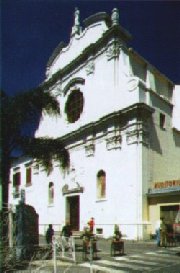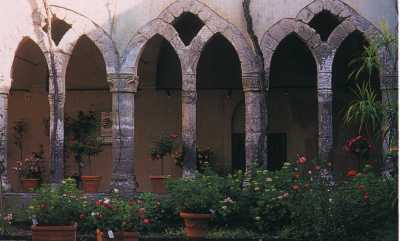







 |

The
origin of the monastery dates back to the first half of the eighth century. The
cloister’s architecture shows crossed tuff arches on two sides of the portico,
stylistic expression of the late fourteenth century, replaced on the other two
sides by round arches on octagonal pilasters. Moreover, it is important to
underline the presence of several elements from heathen temples, like the three
corner columns functionally reused.The monastery's
origin dates back to the first half of the XVth century. The cloister's
architecture presents crossed arches in tufo on two sides of the portico,
expressing the style of the late 1300s and substituted on the other two sides by
round arches on octagonal pilasters. Various elements of pillage are present as
in three corner columns reutilized functionally after being taken from pagan
temples. Beside the convent is situated the Church of S. Francesco which
dates back to the sixteenth century. Inside it is possible to admire, in the
first of three chapels on the right, a wooden statue representing the Saint with
the Crucified, given as a gift by the family Vulcano in the seventeenth century.

|
